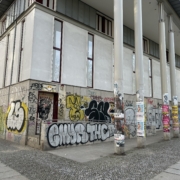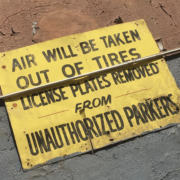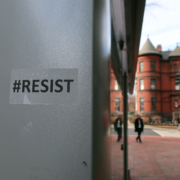Public transportation systems need a more rational approach to graffiti and street art
From dirty, trash strewn, and smelly buses and subway cars, bus transportation hubs, and subway stations, through unreliable schedules, to rude, unhelpful, and surly bus drivers and subway booth attendants, if you are like lots of people, there are many things that bother you about public transportation systems.
However, amidst these complaints, graffiti and street art, on buses and subway cars, and in bus depots and subway stations has never bothered me.
In brief, in the late 1960s, contemporary graffiti, with its rich history intertwined with urban and street culture, started appearing in the subway stations of New York City. It then spread to the subway cars and tunnels. Due to a variety of factors, including transit police cracking down on this kind of activity, it eventually emerging outside above ground on the streets.
Despite its roots, mass transit systems frequently allocate significant resources towards graffiti and street art abatement efforts, funds that could be redirected towards more pressing needs such as infrastructure and modernization improvements; the quality of personnel; reliability; accessibility for individuals with disabilities; strategies to address capacity and crowding; not to mention cleanliness and safety.
Rather than abating graffiti (and street art) outright, why not engage with riders and seek their input through periodic surveys? Ask patrons if they appreciate graffiti and street art, and whether they have preferences for certain styles, and where they think it might best be placed. Although subway graffiti itself is a distinct genre, a wide spectrum of artistic expressions within this realm exist, each utilizing unique materials and techniques.
What has our 65 year experience dealing with graffiti and street art in public transportation systems taught us?
Our approach has been largely futile and financially draining. Instead of viewing graffiti and street art as a nuisance, we should recognize its potential as a tool for revitalizing mass transit systems.
There are several compelling reasons why mass transit systems should embrace graffiti and street art.
To begin with these systems often suffer from visual monotony, with bland and uninspiring aesthetics. Introducing graffiti and street art could inject vibrancy and creativity, perhaps sparking conversations among passengers and fostering a sense of community.
Moreover, if concerns arise regarding the placement of graffiti and street art, innovative solutions can be explored. Public transportation systems could designate specific areas for artistic expression, sponsor competitions to showcase talent, and provide materials to encourage engagement.
By embracing graffiti and street art in controlled environments, transit authorities can strike a balance between artistic freedom and maintenance concerns.
Finally, it’s time for public transportation systems to rethink their stance on graffiti and street art. Rather than viewing them as liabilities, let’s recognize their potential to enhance urban public spaces and enrich the commuting experience.
By embracing creativity and community engagement, transit authorities can transform bland transportation vehicles and hubs into dynamic cultural hubs.
Photo credit
Photographer: txmx 2
Subject Graffiti in Hamburg Subway












